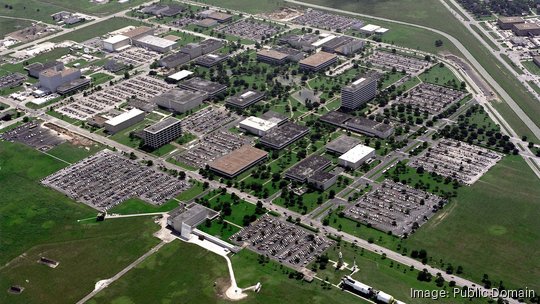
In the wake of a new partnership between an energy supermajor and NASA, Johnson Space Center in Houston is putting out the call for more of the same.
“I think you can plan for an increased number of partnerships going forward. I anticipate that partnerships will continue to become a bigger part of Johnson Space Center strategy,” said Nick Skytland, chief technologist at JSC. “We recognize that this is truly humanity's collaboration to advance human space exploration. So, we want to see more people be part of that.”
Skytland said part of the reason for the partnerships is the fact that NASA will have more constraints due to its budget than private companies. He compared NASA’s 2024 budget of $24.8 billion to the global space economy, which was valued at $630 billion in 2023 and is projected to hit the $1.8 trillion mark by 2035.
On Aug. 13, the agency signed a Space Act Agreement with U.K.-based BP PLC (NYSE: BP), which has its U.S. headquarters in Houston. Such agreements allow NASA to work with non-governmental organizations in support of its mission. Under the new partnership, BP and NASA will begin a research-sharing program for a variety of technology, including work similar to BP’s digital twin technology that allows the company to monitor and operate its offshore oil and gas platforms remotely.
Skytland clarified that the BP agreement was a non-reimbursable partnership, which means that money is not directly involved in the partnership.
“Maybe that relationship turns into a procurement, where there's a contractual exchange of resources, but oftentimes a partnership is formed around common needs,” Skytland said. “There are the procurements — for example, we are going to hire someone to build us a spacesuit. But then there's partnerships that say, ‘What do you need? What do I need? Is there some common areas of interest?’ And I think they're both equally important as part of NASA's strategy.”
Johnson’s key role in securing these Space Act Agreements stems from its position as the center for human spaceflight. Although NASA was given a tighter budget to work with in 2024, Congress approved a bump for human spaceflight programs as the agency gets the wheels in motion for the Artemis program.
Artemis III, which is projected to launch no earlier than September 2026, would be the agency’s first human return to the moon since 1972.
Houston’s role in bridging industry gaps
Skytland confirmed that NASA does have technology partnerships with other energy producers, including the soon-to-be Houston-based Chevron Corp. (Nasdaq: CVX). But bridging the gap between any industry, including space, involves getting out of Johnson Space Center and heading up the “Space Corridor” on Interstate 45.
“If everybody stays in their own buildings, there's not a lot of synergy that's happening,” Skytland said. “We are very purposeful on leaving Johnson Space Center and moving throughout the city of Houston so that we can learn from others like Chevron and Shell and Houston Methodist and Exxon. We want to be where others are.”
Bringing industry closer to NASA involves several local opportunities for businesses to tap into. Skytland urged companies to look into Small Business Innovation Research, or SBIR, grants as well as NASA’s Solve program, which matches researchers and founders with grant opportunities tackling specific technology challenges.
And companies that want to be closer to JSC should consider Exploration Park, NASA’s new hub for innovation located just outside the center’s controlled access area.
“[Exploration Park] is a once-in-a-generation opportunity. This is the largest expansion of Johnson Space Center since the '60s,” Skytland said. “That's not going to happen all the time. It's happening right now.”
NASA formally revealed Exploration Park when announcing its first tenant, the Texas A&M University Space Institute, earlier this year. The agency then leased over 200 acres to Austin-based ACMI, a developer that will build offices and labs and lease that space to interested tenants.
Sign up here for the Houston Business Journal’s free morning and afternoon daily newsletters to receive the latest business news impacting greater Houston.





